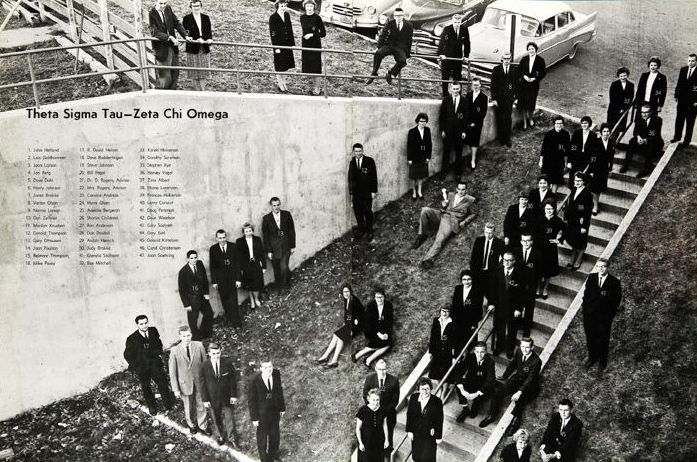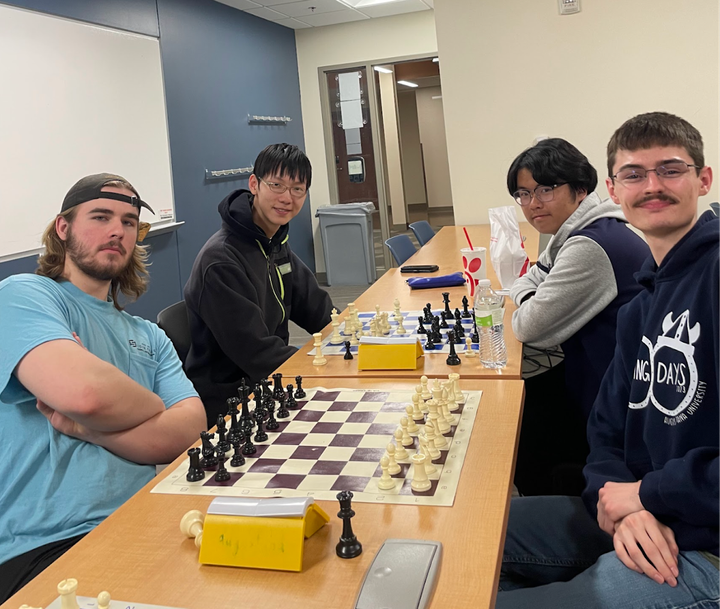Friends of the Big Sioux River group hosts future of water in South Dakota event

A lack of rain over the past year seems like it should be bad news to the Friends of the Big Sioux River, the organizer of the recent Future of Water in South Dakota event.
Surprisingly, drought has been a cause for celebration for the group, even as South Dakota faces looming concerns about running out of water, because it leads to better water quality for the Big Sioux River.
The Future of Water in South Dakota event brought together politicians, pastors, professors, engineers, farmers, business owners and more to Augustana’s Hamre Recital Hall on the night of Nov. 9. A handful of Augustana students joined in as well, though most shuffled off before the second speaker, having written enough to receive extra credit for their biology class.
After a reception in the atrium featuring tables with a variety of water-related organizations handing out pamphlets and explaining their missions, the throngs of people finally sat down in the Hamre, well past the planned seven o’clock start time.
A bearded and bespectacled Travis Entenman, managing director of the Friends of the Big Sioux River, took the stage and played a short video highlighting the group’s conservation efforts, ranging from trash pickups to brewing beer with water from the Big Sioux.
It wasn’t long before Entenman passed the mic to Board Treasurer Rachel Kloos and outreach and Donor Coordinator Emily Oyos to present the 2023 Big Sioux River water quality testing data.
The three factors tested by the Friends of The Big Sioux River were total suspended solids, E. Coli and nitrates. Kloos said both TSS and E. Coli levels decreased significantly from the previous year but were still at unacceptable levels across many parts of the river.
Kloos said she was optimistic about these results.
“I like to celebrate,” Kloos said. “This is a win.”
Kloos tempered this optimism by reminding attendees that in 2022, South Dakota had an average of 17.47 inches of rain. This year, there were only 9.03 inches. She said decreased rainfall limiting runoff was likely a large contributor to improved water quality.
“We are really hoping [TSS and E. Coli levels] continue to go down,” Kloos said. “2023 reports will be really important to seeing how we are doing as a whole.”
According to Kloos, nitrates have never been a problem for the Big Sioux River, but levels have been gradually increasing. Oyos reminded people to clean up animal waste and encouraged the creation of more riparian buffers that prevent fertilizer runoff and keep nitrates out of the river.
The keynote speakers of the night, Jay Gilbertson, manager of the East Dakota Water Development District, and Troy Larson, executive director of the Lewis and Clark Regional Water System, broadened the night’s focus from the future of the Big Sioux River to the future of all of South Dakota’s water.
Gilbertson began by explaining the sources of South Dakota’s water. He said most water is sent from the Missouri River through the Lewis and Clark pipeline. Almost as much comes from wells across South Dakota.
In the past, the Big Sioux River was a major source of water for South Dakota but usage fell after the Lewis and Clark pipeline was authorized by Congress in 2001. As demand for water has increased in recent years, though, South Dakota has returned to taking water from the Big Sioux River.
Gilbertson presented a variety of ways South Dakota could expand its water supply. He urged listeners to protect what they have and encouraged more research into current water sources. Gilbertson also pointed to the importance of directed development, building businesses and cities near water.
Gilbertson commended efforts to reduce, reuse and recycle water but elucidated that the only solution “rooted in reality” is long distance transportation of water.
Larson said he agreed with Gilbertson, advocating to expand the usage of the Lewis and Clark pipeline and add a second pipeline in the near future.
Currently, the Lewis and Clark pipeline transports 47.7 million gallons a day, far below its maximum capabilities. Larson hopes the state of South Dakota will grant a request for 17.07 million gallons a day more in ground water rights within the next year, bringing the pipeline to its maximum capacity of 60 million gallons a day.
Even with this increase, it will only be 15 to 40 years before demand again outpaces supply, Larson said. One solution to this problem is Dakota Mainstem, which would connect three regional water systems to create connected pipelines across the state. North Dakota already has a similar system that Dakota Mainstem emulates.
“North Dakota is years ahead of us in water, and we hate when they’re ahead of us in anything,” Larson said.
While copying North Dakota’s system to bring water all through South Dakota would be ideal, Larson said he thinks this solution will be difficult to get approval for. Creating a second pipeline running parallel to the Lewis and Clark pipeline would be easier and quicker, though either option requires hundreds of millions of dollars of funding.
In the Q&A following their presentations, Gilbertson and Larson said South Dakota cannot solve its water crisis on its own. The only realistic path forward for South Dakota, they said, is staking claim to water from the Missouri River.
“We cannot conserve our way out of here,” Larson said. “That will buy us time, but it will not solve the problem.”
When asked about what needs to be done to clean up the Big Sioux River, Gilbertson responded, “All the people would have to leave.”
The Augustana students who attended said they enjoyed the event.
“It was interesting to see how we’ve impacted the environment and not always for good,” senior Debanhi Adame-Hernandez said.
Leaving the event, Adame-Hernandez said she felt torn between hope and hopelessness. Yet, Gilbertson’s words stuck with her.
“I want to do what I can,” Adame-Hernandez said. “The only way it can get better is if we leave.”



